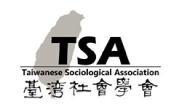4.比較入選機率分組與其他加權方法對電話調查樣本的調整: 上網率的推估(A Comparison of Propensity Score Sub-classification and other Ca
2018-08-20
| 描述 Description |
中文摘要 傳統的事後分層與多重反覆加權法可以降低抽樣誤差,但在改進 推估偏差的效果仍然有限。本研究採用「入選機率調整法(propensity score adjustment, PSA)」,對2008年的電話訪問樣本進行18歲以上臺灣 民眾之上網率的推估,進行上述兩種加權方法以及其納入PSA前後之估 計效果的比較。在幾種入選機率值(propensity scores, PS)的調整方法 中,本研究採用次樣本分組法,因此也同時比較四到十個分組之間估計 效果的差異。 本研究以同一時段蒐集的「臺灣地區社會變遷基本調查五期四次全 球化組」為PSA的參考樣本;(前)行政院研究考核委員會執行的「數 位落差調查」所推估的全臺灣民眾的上網率為擬母體黃金標準,亦即 PSA與兩種傳統加權之估計效果的比較基準。結果證實納入原調查權數 (來自事後分層與多重反覆加權)後,在五個次樣本分組時,上網率的 估計值最接近數位落差調查的估計值。比起納入事後分層權數,納入多 重反覆加權權數的PSA在估計誤差上相對較小。 鍵詞:事後分層、多變項反覆加權、入選機率調整法、次樣本分組 |
| 形式 Form | 文字、單期 |
| 來源 Origin | 台灣社會學會 |
| 關聯 Relation | 台灣社會學刊第56期 |
| 英文摘要 abstract | Abstract While post-stratification and raking calibration methods can reduce sampling errors, they have estimation limitations. The author adopts propensity score adjustment (PSA) to estimate Internet usage based on data collected from a 2008 telephone sample. Comparisons were made among post-stratification, raking, post-stratification PSA, and raking PSA. Stratification was used to produce PS weights and to compare estimated Internet usage for seven sub-classifications. The Taiwanese Social Change Survey conducted during the same period was used as the reference sample for PSA, while official statistics based on a Digital Divide Survey as the benchmark for bias reduction comparisons. Results indicate that (a) Internet usage estimates based on PSA adjusted according to base weight (i.e., survey weight from post-stratification or raking) using five sub-classes were more accurate than other estimates, and (b) bias reduction based on PSA adjusted by raking exceeded that of PSA adjusted by post-stratification. Keywords: Post-Stratification, Raking, Propensity Score Adjustment, Sub-Classification |
| 創作者 Creator | 杜素豪(Su-Hao TU) |
| 出版者 Publisher | 台灣社會學會 |
| 貢獻者 Contributor | |
| 權利 Right | 已授權 |
| 日期 Date | 2015年6月 |
| 格式 Format | |
| 識別碼 Code | tsa-tj-056_20150600_0003-0000-p |
| 語言 Language | 中文 |
| 數位檔連結Download | ( tsa-tj-056_20150600_0003-0000-p.pdf ) 華藝線上圖書館連結▼ |



